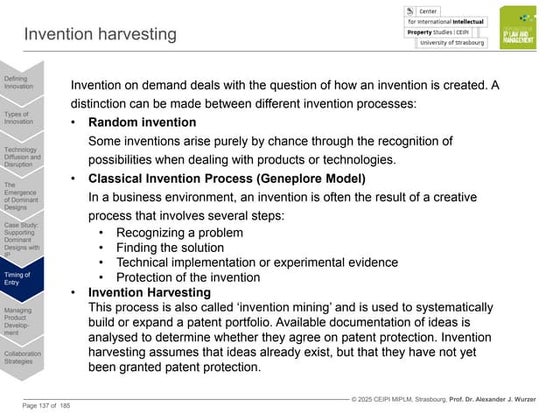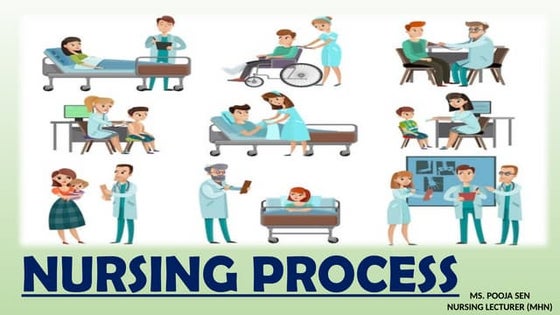Board of directors
- 1. BOARD OF DIRECTORS [Print Page] Central Board of State Bank of India (As on 13th May 2009) Sr. No. Name of Director Sec. of SBI Act, 1955 Shri O.P. Bhatt 1. 19(a) Chairman Shri S.K. Bhattacharyya 2. 19(b) MD & CC&RO Shri R. Sridharan 3. 19(b) MD & GE(A&S) 4. Dr. Ashok Jhunjhunwala 19(c) 5. Shri Dileep C. Choksi 19(c) 6. Shri S. Venkatachalam 19(c) 7. Shri. D. Sundaram 19(c) 8. Dr. Deva Nand Balodhi 19(d) 9. Prof. Mohd. Salahuddin Ansari 19(d) 10. Dr.(Mrs.) Vasantha Bharucha 19(d) 11. Dr. Rajiv Kumar 19(d) 12. Shri Ashok Chawla 19(e) 13. Smt. Shyamala Gopinath 19(f) EVOLUTION OF SBI [Print Page] KEY POINTS ? Establishment Business Major change in The origin of the State Bank of India goes back to the first decade of the nineteenth century with the establishment of the Bank of Calcutta in the conditions Calcutta on 2 June 1806. Three years later the bank received its charter Presidency Banks and was re-designed as the Bank of Bengal (2 January 1809). A unique Act institution, it was the first joint-stock bank of British India sponsored by the Government of Bengal. The Bank of Bombay (15 April 1840) and the Presidency Banks Bank of Madras (1 July 1843) followed the Bank of Bengal. These three of Bengal banks remained at the apex of modern banking in India till their amalgamation as the Imperial Bank of India on 27 January 1921. Imperial Bank First Five Year Primarily Anglo-Indian creations, the three presidency banks came into Plan existence either as a result of the compulsions of imperial finance or by
- 2. the felt needs of local European commerce and were not imposed from outside in an arbitrary manner to modernise India's economy. Their evolution was, however, shaped by ideas culled from similar developments in Europe and England, and was influenced by changes occurring in the structure of both the local trading environment and those in the relations of the Indian economy to the economy of Europe and the global economic framework. Bank of Bengal H.O. Establishment The establishment of the Bank of Bengal marked the advent of limited liability, joint-stock banking in India. So was the associated innovation in banking, viz. the decision to allow the Bank of Bengal to issue notes, which would be accepted for payment of public revenues within a restricted geographical area. This right of note issue was very valuable not only for the Bank of Bengal but also its two siblings, the Banks of Bombay and Madras. It meant an accretion to the capital of the banks, a capital on which the proprietors did not have to pay any interest. The concept of deposit banking was also an innovation because the practice of accepting money for safekeeping (and in some cases, even investment on behalf of the clients) by the indigenous bankers had not spread as a general habit in most parts of India. But, for a long time, and especially upto the time that the three presidency banks had a right of note issue, bank notes and government balances made up the bulk of the investible resources of the banks. The three banks were governed by royal charters, which were revised from time to time. Each charter provided for a share capital, four-fifth of which were privately subscribed and the rest owned by the provincial government. The members of the board of directors, which managed the affairs of each bank, were mostly proprietary directors representing the large European managing agency houses in India. The rest were government nominees, invariably civil servants, one of whom was elected as the president of the board. Group Photogaph of Central Board (1921) Business The business of the banks was initially confined to discounting of bills of
- 3. exchange or other negotiable private securities, keeping cash accounts and receiving deposits and issuing and circulating cash notes. Loans were restricted to Rs.one lakh and the period of accommodation confined to three months only. The security for such loans was public securities, commonly called Company's Paper, bullion, treasure, plate, jewels, or goods 'not of a perishable nature' and no interest could be charged beyond a rate of twelve per cent. Loans against goods like opium, indigo, salt woollens, cotton, cotton piece goods, mule twist and silk goods were also granted but such finance by way of cash credits gained momentum only from the third decade of the nineteenth century. All commodities, including tea, sugar and jute, which began to be financed later, were either pledged or hypothecated to the bank. Demand promissory notes were signed by the borrower in favour of the guarantor, which was in turn endorsed to the bank. Lending against shares of the banks or on the mortgage of houses, land or other real property was, however, forbidden. Indians were the principal borrowers against deposit of Company's paper, while the business of discounts on private as well as salary bills was almost the exclusive monopoly of individuals Europeans and their partnership firms. But the main function of the three banks, as far as the government was concerned, was to help the latter raise loans from time to time and also provide a degree of stability to the prices of government securities. Old Bank of Bengal Major change in the conditions A major change in the conditions of operation of the Banks of Bengal, Bombay and Madras occurred after 1860. With the passing of the Paper Currency Act of 1861, the right of note issue of the presidency banks was abolished and the Government of India assumed from 1 March 1862 the sole power of issuing paper currency within British India. The task of management and circulation of the new currency notes was conferred on the presidency banks and the Government undertook to transfer the Treasury balances to the banks at places where the banks would open branches. None of the three banks had till then any branches (except the sole attempt and that too a short-lived one by the Bank of Bengal at Mirzapore in 1839) although the charters had given them such authority. But as soon as the three presidency bands were assured of the free use of government Treasury balances at places where they would open branches, they embarked on branch expansion at a rapid pace. By 1876, the branches, agencies and sub agencies of the three presidency banks covered most of the major parts and many of the inland trade centres in India. While the Bank of Bengal had
- 4. eighteen branches including its head office, seasonal branches and sub agencies, the Banks of Bombay and Madras had fifteen each. Bank of Madras Note Dated 1861 for Rs.10 Presidency Banks Act The presidency Banks Act, which came into operation on 1 May 1876, brought the three presidency banks under a common statute with similar restrictions on business. The proprietary connection of the Government was, however, terminated, though the banks continued to hold charge of the public debt offices in the three presidency towns, and the custody of a part of the government balances. The Act also stipulated the creation of Reserve Treasuries at Calcutta, Bombay and Madras into which sums above the specified minimum balances promised to the presidency banks at only their head offices were to be lodged. The Government could lend to the presidency banks from such Reserve Treasuries but the latter could look upon them more as a favour than as a right. Bank of Madras The decision of the Government to keep the surplus balances in Reserve Treasuries outside the normal control of the presidency banks and the connected decision not to guarantee minimum government balances at new places where branches were to be opened effectively checked the growth of new branches after 1876. The pace of expansion witnessed in the previous decade fell sharply although, in the case of the Bank of Madras, it continued on a modest scale as the profits of that bank were mainly derived from trade dispersed among a number of port towns and inland centres of the presidency. India witnessed rapid commercialisation in the last quarter of the nineteenth century as its railway network expanded to cover all the major regions of the country. New irrigation networks in Madras, Punjab and Sind accelerated the process of conversion of subsistence crops into cash crops, a portion of which found its way into the foreign markets. Tea and coffee plantations transformed large areas of the eastern Terais, the hills of Assam and the Nilgiris into regions of estate agriculture par excellence. All these resulted in the expansion of India's international trade more than six-fold. The three presidency banks were both beneficiaries and promoters of this commercialisation process as they became involved in the financing of practically every trading,
- 5. manufacturing and mining activity in the sub-continent. While the Banks of Bengal and Bombay were engaged in the financing of large modern manufacturing industries, the Bank of Madras went into the financing of large modern manufacturing industries, the Bank of Madras went into the financing of small-scale industries in a way which had no parallel elsewhere. But the three banks were rigorously excluded from any business involving foreign exchange. Not only was such business considered risky for these banks, which held government deposits, it was also feared that these banks enjoying government patronage would offer unfair competition to the exchange banks which had by then arrived in India. This exclusion continued till the creation of the Reserve Bank of India in 1935. Bank of Bombay Presidency Banks of Bengal The presidency Banks of Bengal, Bombay and Madras with their 70 branches were merged in 1921 to form the Imperial Bank of India. The triad had been transformed into a monolith and a giant among Indian commercial banks had emerged. The new bank took on the triple role of a commercial bank, a banker's bank and a banker to the government. But this creation was preceded by years of deliberations on the need for a 'State Bank of India'. What eventually emerged was a 'half-way house' combining the functions of a commercial bank and a quasi-central bank. The establishment of the Reserve Bank of India as the central bank of the country in 1935 ended the quasi-central banking role of the Imperial Bank. The latter ceased to be bankers to the Government of India and instead became agent of the Reserve Bank for the transaction of government business at centres at which the central bank was not established. But it continued to maintain currency chests and small coin depots and operate the remittance facilities scheme for other banks and the public on terms stipulated by the Reserve Bank. It also acted as a bankers' bank by holding their surplus cash and granting them advances against authorised securities. The management of the bank clearing houses also continued with it at many places where the Reserve Bank did not have offices. The bank was also the biggest tenderer at the Treasury bill auctions conducted by the Reserve Bank on behalf of the Government. The establishment of the Reserve Bank simultaneously saw important amendments being made to the constitution of the Imperial Bank converting it into a purely commercial bank. The earlier restrictions on its business were removed and the bank was permitted to undertake
- 6. foreign exchange business and executor and trustee business for the first time. Imperial Bank The Imperial Bank during the three and a half decades of its existence recorded an impressive growth in terms of offices, reserves, deposits, investments and advances, the increases in some cases amounting to more than six-fold. The financial status and security inherited from its forerunners no doubt provided a firm and durable platform. But the lofty traditions of banking which the Imperial Bank consistently maintained and the high standard of integrity it observed in its operations inspired confidence in its depositors that no other bank in India could perhaps then equal. All these enabled the Imperial Bank to acquire a pre- eminent position in the Indian banking industry and also secure a vital place in the country's economic life. Stamp of Imperial Bank of India When India attained freedom, the Imperial Bank had a capital base (including reserves) of Rs.11.85 crores, deposits and advances of Rs.275.14 crores and Rs.72.94 crores respectively and a network of 172 branches and more than 200 sub offices extending all over the country. First Five Year Plan In 1951, when the First Five Year Plan was launched, the development of rural India was given the highest priority. The commercial banks of the country including the Imperial Bank of India had till then confined their operations to the urban sector and were not equipped to respond to the emergent needs of economic regeneration of the rural areas. In order, therefore, to serve the economy in general and the rural sector in particular, the All India Rural Credit Survey Committee recommended the creation of a state-partnered and state-sponsored bank by taking over the Imperial Bank of India, and integrating with it, the former state-owned or state-associate banks. An act was accordingly passed in Parliament in May 1955 and the State Bank of India was constituted on 1 July 1955. More than a quarter of the resources of the Indian banking system thus passed under the direct control of the State. Later, the State Bank of India (Subsidiary Banks) Act was passed in 1959, enabling the State Bank of India to take over eight former State- associated banks as its subsidiaries (later named Associates). The State Bank of India was thus born with a new sense of social purpose aided by the 480 offices comprising branches, sub offices and three Local Head Offices inherited from the Imperial Bank. The concept
- 7. of banking as mere repositories of the community's savings and lenders to creditworthy parties was soon to give way to the concept of purposeful banking subserving the growing and diversified financial needs of planned economic development. The State Bank of India was destined to act as the pacesetter in this respect and lead the Indian banking system into the exciting field of national development. Home | Sitemap | FAQs | Right to Information Act 2005 | Disclaimer This site best viewed on resolution 800 x 600 ? 2008 Copyright State
- 8. Volume 14, Number 2 Article by Ashok Thampy , Vivek Moorthy June, 2002 Banking on SBI: Interview with Dipankar Basu : Dipankar Basu joined the ?big daddy? of banking, State Bank of India (SBI) in 1956 and spent his entire professional career with SBI, serving as Chairman of the bank between 1993 and 1995. Basu spoke to Ashok Thampy and Vivek Moorthy of IIMB on ?how the animal has changed its characteristics?, tracing the development of SBI from its pre-Independence avatar as the Imperial Bank of India, its period of lone splendour from 1955 till the other banks were nationalised in 1969, and the way it has risen to the challenges of the opening of the economy in the last decade. In the first 10-15 years, SBI worked as an instrument for government policy ? rural and agricultural credit, opening of branches in un-serviced areas, taking banking to the small-scale industries and financing small entrepreneurs. Later on came the social programmes like IRDP and the Prime Minister?s Rozgar Yojana, the politically designed instruments. While the bank did reduce the ?spatial gap? in banking it lagged behind, Basu agrees, in asset creation and providing ?other services? to customers. However, in the last 10 years, SBI has taken on the new entrants and become a strong player in the market, playing by the market-driven rules of the game. Basu claims that SBI has always anticipated the move towards ?universal banking?, and he spearheaded the bank?s entry into the investment banking and mutual fund businesses ? SBI Capital Markets and SBI Mutual Fund. A member of the government?s Disinvestment Commission between 1996 and 1999, Basu spoke about the privatisation process and the initiatives taken by the government, and other trends in banking such as the increasing use of technology in retail banking and the convergence in the financial sector.

![BOARD OF DIRECTORS
[Print Page]
Central Board of State Bank of India
(As on 13th May 2009)
Sr. No. Name of Director Sec. of SBI Act, 1955
Shri O.P. Bhatt
1. 19(a)
Chairman
Shri S.K. Bhattacharyya
2. 19(b)
MD & CC&RO
Shri R. Sridharan
3. 19(b)
MD & GE(A&S)
4. Dr. Ashok Jhunjhunwala 19(c)
5. Shri Dileep C. Choksi 19(c)
6. Shri S. Venkatachalam 19(c)
7. Shri. D. Sundaram 19(c)
8. Dr. Deva Nand Balodhi 19(d)
9. Prof. Mohd. Salahuddin Ansari 19(d)
10. Dr.(Mrs.) Vasantha Bharucha 19(d)
11. Dr. Rajiv Kumar 19(d)
12. Shri Ashok Chawla 19(e)
13. Smt. Shyamala Gopinath 19(f)
EVOLUTION OF SBI
[Print Page]
KEY POINTS ?
Establishment
Business
Major change in
The origin of the State Bank of India goes back to the first decade of
the nineteenth century with the establishment of the Bank of Calcutta in the conditions
Calcutta on 2 June 1806. Three years later the bank received its charter Presidency Banks
and was re-designed as the Bank of Bengal (2 January 1809). A unique Act
institution, it was the first joint-stock bank of British India sponsored by
the Government of Bengal. The Bank of Bombay (15 April 1840) and the Presidency Banks
Bank of Madras (1 July 1843) followed the Bank of Bengal. These three of Bengal
banks remained at the apex of modern banking in India till their
amalgamation as the Imperial Bank of India on 27 January 1921. Imperial Bank
First Five Year
Primarily Anglo-Indian creations, the three presidency banks came into Plan
existence either as a result of the compulsions of imperial finance or by](https://image.slidesharecdn.com/boardofdirectors-120113232502-phpapp01/85/Board-of-directors-1-320.jpg)






















































